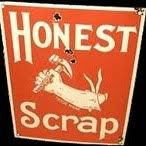Here's some more useful information on writing scenes:
Step 1. Consider the scene's placement in the overall novel. Where are the characters coming from--both physically and emotionally--and where will they proceed once the scene is done? Understand how the scene fits into the complete narrative arc and what purpose it plays in moving toward your conclusion.
Step 2. Work out the basic action in your scene: Which characters are involved, what do they do in the scene and how does their behavior change (or not change) the course of the narrative? You don't have to be that detailed, at least not yet. You just want a bare-bones framework of how it's all going to play out.
Step 3. Generate a tone for the scene consistent with the emotions you want to convey. If you're writing an action scene, it should be tension-filled and exciting. If it's a romantic breakup, it should be tragic and painful. The tone can come out in the emotions of the characters or the tenor of the description, but it needs to be consistent throughout the scene.
Step 4. Establish a setting for the scene that fits the mood and tone. It can be just about anywhere, though it should have a logical connection to the remainder of the story and be conducive to whatever action you have set up. Describe the setting to the reader at the beginning of the scene. You should give a strong impression of the locale and include any important details, but otherwise refrain from devolving into excess description.
Step 5. Write a draft of the scene based on your conclusions in the previous steps. Include any dialogue between the characters, descriptions of the things they do in the scene, a proper beginning, development and an end (which should logically proceed to the next scene).
Step 6. Revise your scene, cutting out any unnecessary details. Polish the prose if it needs work. Some authors like to do this as part of revising the novel as a whole. Others like to do it scene by scene, in order to keep themselves focused on the immediate task. Whatever method works best for you is the right one, but no scene is complete until it goes through at least one careful revision.
Tips & Warnings.
As your writing skills improve, consider experimenting with the way you write scenes. Work on flashbacks, cross-cutting, use of the present tense and similarly creative alternatives. Like everything else, it's preferable to start out with the basics, but plain-vanilla scenes can get boring after a time...as well as prevent you from stretching your wings as a writer.



 Thanks,
Thanks, 
0 comments:
Post a Comment